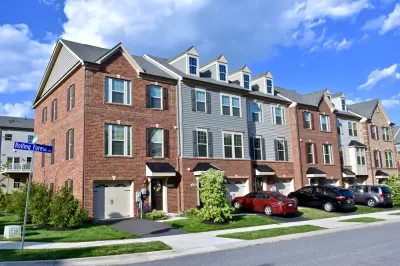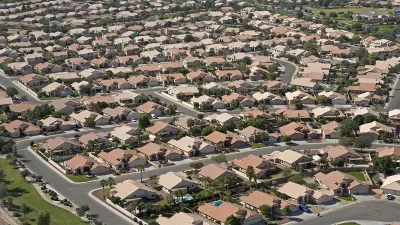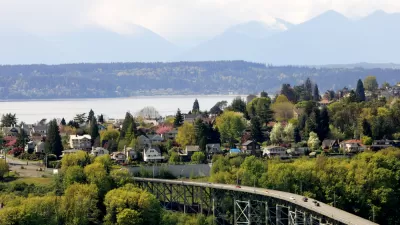A study shows zoning reform isn't a silver bullet for the housing crisis. In some low-income and BIPOC neighborhoods, it could 'cause more harm than good.'

As proposals to reduce or eliminate single-family zoning requirements sweep the country, a new report from New York City’s Association for Neighborhood and Housing Development cautions that "neighborhood upzonings in BIPOC, low-income communities are where these rezonings are really going to cause more harm than good."
Cinnamon Janzer reports on the study, which compared rezoned neighborhoods to those that were not rezoned and "found stark differences between the rezoned areas and the non-rezoned areas." The team "also looked at projects where just a few parcels of land were rezoned at a time. They found that these targeted rezonings produced a higher ratio of affordable housing to market-rate housing than the city’s average of 19%, whereas any neighborhood-scale rezoning, whether the neighborhood was upzoned or downzoned, produced a lower-than-citywide-average ratio of affordable housing."
"Essentially, Walters’ data backs up the fact that more affordable housing is already being built in low-income BIPOC communities and that those communities have the most to lose by new development that brings in market-rate housing." According to Will Delaney, associate director of Hope Community, Inc. in Minneapolis, "just eliminating [single-family zoning] does not, in fact, actually repair the harms of it. If you just undo that but leave everything else the same, the research is laying out what we know to be true—the same winners and losers in the current market will win and lose based on this." Rather than using upzoning as a blunt instrument, says Walters, "the answer lies in treating rezoning and upzoning as what they are—one housing tool among many that should be used where appropriate."
Meanwhile, alarmist concerns about "the death of single-family housing" seem unlikely to come true, even with zoning reform. Under California's proposed SB 9, which is "designed to allow up to four homes on most single-family lots and spur the construction of badly needed new housing," separate research from the Terner Center at the University of California, Berkeley found that a total of 714,000 homes could be built on "5.4% of the state’s 7.5 million single-family lots "a "modest reform" considering the state's deep housing crisis.
FULL STORY: Use Upzoning Sparingly, New Report Suggests

Americans May Be Stuck — But Why?
Americans are moving a lot less than they once did, and that is a problem. While Yoni Applebaum, in his highly-publicized article Stuck, gets the reasons badly wrong, it's still important to ask: why are we moving so much less than before?

Using Old Oil and Gas Wells for Green Energy Storage
Penn State researchers have found that repurposing abandoned oil and gas wells for geothermal-assisted compressed-air energy storage can boost efficiency, reduce environmental risks, and support clean energy and job transitions.

Placekeeping: Setting a New Precedent for City Planners
How a preservation-based approach to redevelopment and urban design can prevent displacement and honor legacy communities.

San Francisco’s Muni Ridership Grew in 2024
The system saw its highest ridership since before the Covid-19 pandemic, but faces a severe budget shortage in the coming year.

Colorado Lawmakers Move to Protect BRT Funding
In the face of potential federal funding cuts, CDOT leaders reasserted their commitment to planned bus rapid transit projects.

Safe Streets Funding in Jeopardy
The Trump administration is specifically targeting bike infrastructure and other road safety projects in its funding cuts.
Urban Design for Planners 1: Software Tools
This six-course series explores essential urban design concepts using open source software and equips planners with the tools they need to participate fully in the urban design process.
Planning for Universal Design
Learn the tools for implementing Universal Design in planning regulations.
Heyer Gruel & Associates PA
City of Moreno Valley
Institute for Housing and Urban Development Studies (IHS)
City of Grandview
Harvard GSD Executive Education
Salt Lake City
NYU Wagner Graduate School of Public Service
City of Cambridge, Maryland





























